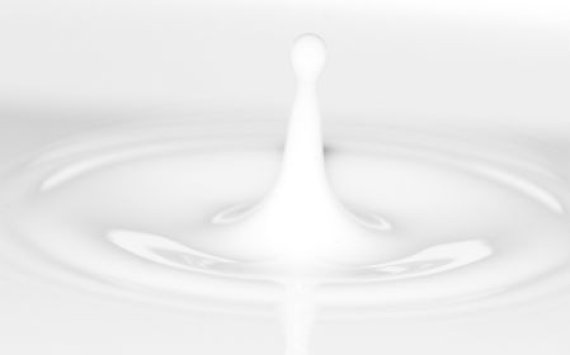Foto: Sjoerd van Oosten
Human Nutrition researchers discovered this by getting test subjects to smell glasses of milk containing varying levels of fat. They published their finding in the journal PLoS ONE at the end of January. That people can distinguish between fat levels is in itself a fundamental discovery, but it may also help us to avoid overeating.
‘The volatile substance emitting the smell could be added to light products, for example,’ says Sanne Boesveldt, assistant professor of Human Nutrition, ‘so that people find it more appealing.’ But the mysterious aroma must first be identified: something Boesveldt wants to attempt in her future research.
Evolution
In the current experiment, Boesveldt got test subjects to smell glasses of milk containing skimmed, semi-skimmed or whole milk. In more than half the cases, the participants could detect the difference. The bigger the difference in fat levels, the more often they made the correct choice. When asked to differentiate between skimmed (1.25 percent) and whole milk (2.6 percent), participants got it right two thirds of the time. The test using skimmed and semi-skimmed, or semi-skimmed and whole milk did not always deliver such significant results.
It was interesting that it made no difference for the results whether people normally drank a lot of milk or only a little. Overweight had no influence either. That is an important finding, thinks Boesveldt: ‘This means an older mechanism is at work, independent of learning processes.’ Although this is speculative, Boesveldt thinks it is plausible that a ‘fat sensor’ has evolved. After all, fat contains a lot of energy and – unlike today – was not always abundantly available in the past. Being able to smell that food contains fat – and therefore energy – was an evolutionary advantage. A related discovery in recent decades is that we have a fatty taste receptor on our tongues.
Volatile substance
This type of research on the detection of fat is still in its infancy and this result still needs to be validated. More importantly, the volatile substance that enables us to detect fat needs to be discovered. Curiously enough, whole fat molecules are not the most promising candidates here: they are too heavy and too large. But Boesveldt is confident that her results will remain valid, and is satisfied with her experiment. ‘This shows that you can prove exciting things with a simple little test.’

